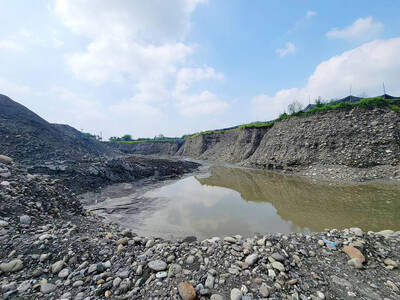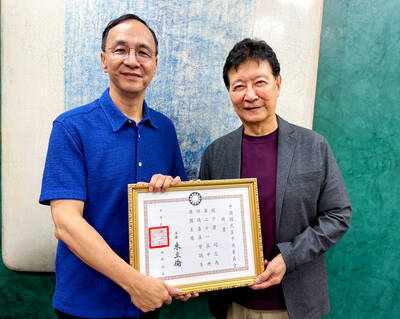It’s fairly well established that strength training is helpful at every age: as well as building muscle, it strengthens tendons and ligaments, increases bone density and seems to have protective effects against everything from osteoporosis to dementia. But a new study based on data collected over two decades in Rio de Janeiro, Brazil, suggests that another physical attribute might be just as important — and it’s one that declines even faster than strength as the years go by. The good news? It might also be less uncomfortable, and even slightly safer, to improve. Also, it will probably make you better at table tennis.
Power, in case your physics is a bit rusty, is force multiplied by velocity — or to put it another way, how quickly you can apply the strength you have. Sprinters, high jumpers and hurdlers need huge amounts of power; marathon runners, who prioritize endurance over explosive strength, don’t. Olympic weightlifting, where heavy barbells are thrown overhead in mere milliseconds, is incredibly power-dependent (unlike the confusingly named powerlifting, where grinding a bench press upwards can take several seconds).
IMPORTANCE OF POWER

Photo: AFP
But power also plays a pivotal role in day-to-day movement, from running up a flight of stairs to catching yourself when you fall, and it’s here that it becomes most important for quality of life. In a recently completed study that tracked almost 4,000 men and women aged between 46 and 75, power was a stronger predictor of mortality than relative strength — meaning that, everything else being equal, people who can produce force quickly are less likely to die early.
One reason for this might be accident prone-ness.
“Power is likely more related to the risk of falls than strength,” says Dr Claudio Gil Araujo, one of the lead authors on the study. “Let’s say you are walking down the street and stumble. To keep your balance and avoid falling, you will have to use your muscles to quickly make compensatory movements — and as we know, a fall, especially for older people, can have serious repercussions on your health. This is where muscle power comes in.”
Part of the problem with this is that power tends to peak in your late 20s and early 30s — this is where elite sprinters typically hit their peak — and declines more quickly than other qualities if you don’t train it.
“It’s strongly advisable to include power training in exercise regimes for individuals in their 30s, 40s and 50s,” says Arto Hautala, an associate professor of physiotherapy and rehabilitation at Finland’s University of Jyvaskyla. “Consider something as simple as crossing at traffic lights: you need to be quick enough to cross the street within the allotted time, which can be a challenge without power.”
So how do you build it? Well, one way is to just keep doing the same physical things you already do, but a bit faster.
“Running upstairs is one of the simplest ways to incorporate power training into your daily routine, and it also incorporates the elements of coordination and balance we need as we age,” says Lightfoot. “You could also try hill sprints or even regular sprints — though for the latter, you need to be more careful and warm up properly.”
Jumping movements (often known as plyometrics) are the next level — it’s impossible to do these slowly, so power is a prerequisite. Here, though, it’s crucial to build up to the harder stuff properly, and minimize your risk of injury.
“There’s a great set of movements that athletics coaches use known as the ‘rudiment hop’ series,” says strength and conditioning coach Joe Lightfoot. “They are very simple — just low-amplitude jumps done forward, backward, sideways or in place — and much safer than more high-speed moves, but you can start with a handful and build up to a solid volume of them.”
Skipping does something similar, encouraging you to keep your jumps low and challenging your coordination: if you have never mastered it, there’s never been a better time to start. Once you’ve got the hang of small hops, you can move up to jumps for height, or for distance: the “broad jump,” where you take off and land on both feet at once, is a great test of explosiveness, and relatively safe.
If you’re going to the gym, you can still do a lot of the same movements you are already doing — but just make a few tweaks to the way you do them.
“When we talk about power training, what we typically mean is using high velocity or speed of execution in the concentric, or ‘raising,’ phase of the movement,” says Araujo. “This is often represented by the simple expression ‘as fast as possible.’”
In other words, if you’re doing a press-up or squat, you’ll do the downward, or eccentric, part of the movement slowly and under control, then explode upwards for the concentric part.
If you’re using free weights or weight-training machines, it’s a good idea to do this with 50-70 percent of the weight you could lift for a single rep — or about the same weight as you’d lift for 10-15 reps of a slower, more traditional movement.
“You should aim for a weight where you can complete six to eight repetitions without the last reps decreasing in speed, resting for one or two minutes between sets,” says Araujo. “If you can reach more reps, increase the weight.”
ENJOYABLE WORKOUT
One little-considered benefit of training like this is that it’s often a lot more pleasant than many traditional styles of training. If you’re doing six to eight reps with maximum speed and stopping when you slow down, there’s no need to go to failure — you’re teaching your muscle fibers to fire together, rather than forcing them to work to their limit. But it might also be a safer way to train for people as they age.
“Arterial blood pressure, or BP, dramatically increases during heavy resistance training,” says Araujo, referencing studies showing that BP also increases dramatically with each rep, especially as a lifter approaches failure. “Thus, the maximal BP tends to be lower at the end of six to eight than with 10-15 high-intensity reps. ”
Finally, of course, you could just get into a sport. Almost any athletic endeavor includes some sort of power component — and generally speaking, the shorter each individual “effort,” the more power-intensive it is. But whether you’re hurling a barbell overhead, or practicing your push-block in table tennis, the important thing is to start building power before it’s too late. Because power isn’t just for elite athletes — it’s essential for maintaining speed, coordination and resilience as you age. Developing it now might mean staying agile, capable and confident in your movements for the rest of your life.
WORKOUT ONE: SPEED
“These exercises are all about controlled explosiveness, and moving with intent — good for when you need that extra push, such as picking up a wriggling toddler or hoisting a box into the loft,” says Roberts. “After a brief pause at the bottom of each, drive up as fast as you can, and repeat each move three times, for three to five sets. Rest for two minutes between sets. You shouldn’t feel out of breath, but your body needs to recover fully to maximize power.”
SPRINTER STEP-BACK
Stand tall with feet hip-width apart, then step one foot back into a deep lunge, driving the opposite arm forward (as if you’re on the start line for a race), and keeping your front knee stacked over your ankle. Push through your front heel to drive back up to standing, and alternate sides. If you’re confident, try sprinter lunges, where you alternate from one side to the other without touching the ground in between.
POWER PRESS UP
Do this one on a wall, kitchen counter, sofa or the floor, depending on how powerful you are feeling. Set your hands just wider than shoulder-width apart, engage your core and lower with control. Now explode upwards into the rep. Ideally, your hands should briefly leave whatever you’re pressing off, but just moving quickly is fine. Catch yourself softly and repeat.
PAUSED SQUAT JUMP
Sink into a squat and pause, holding it for a second. Now drive up — jump off the ground (no tuck), land soft, and drop right back into the next pause. This isn’t about rushing — it’s about control into power. No jump today? No problem. Rise up to the balls of your feet in a strong heel raise and lower under control.
WORKOUT TWO: REACTIVE POWER
“These movements help your body react quickly, and stay relaxed and springy,” says Roberts. “They’re good for balance, coordination and staying agile. Aim to minimize the amount of time spent on the floor.” Do five reps per side, for three to five sets. Rest for one to two minutes between sets.
FORWARD SCISSORS
Stand tall, with your arms up as if you’re ready to sprint. Now, think quick feet — one foot forward, one foot back — staying light as you switch quickly between positions. Keep your upper body steady while the legs do the work. Need to slow it down? Step rather than jump, and make the movement faster over a few sessions.
HIGH PLANK SHOULDER TAPS
The high plank is basically the top of a press-up: your shoulders should be over your wrists, your heels driving back, and core locked in. Now, without shifting your hips, tap one shoulder with the opposite hand. Then switch. Keep your glutes tight, and your body in a straight line from head to heel. Strong and still is better than fast and wobbly.
LATERAL POGOS
Start with your feet together, knees soft and core braced. Now bounce from side to side as if you’re skipping over an invisible line. This should all come from the ankles and calves — keep your heels just off the ground and stay springy. Eyes forward, chest out, arms relaxed at your sides. You are training agility and power here — small jumps, big control. Need to ease in? Just step from side to side using one foot at a time.

Last week the story of the giant illegal crater dug in Kaohsiung’s Meinong District (美濃) emerged into the public consciousness. The site was used for sand and gravel extraction, and then filled with construction waste. Locals referred to it sardonically as the “Meinong Grand Canyon,” according to media reports, because it was 2 hectares in length and 10 meters deep. The land involved included both state-owned and local farm land. Local media said that the site had generated NT$300 million in profits, against fines of a few million and the loss of some excavators. OFFICIAL CORRUPTION? The site had been seized

The depressing numbers continue to pile up, like casualty lists after a lost battle. This week, after the government announced the 19th straight month of population decline, the Ministry of the Interior said that Taiwan is expected to lose 6.67 million workers in two waves of retirement over the next 15 years. According to the Ministry of Labor (MOL), Taiwan has a workforce of 11.6 million (as of July). The over-15 population was 20.244 million last year. EARLY RETIREMENT Early retirement is going to make these waves a tsunami. According to the Directorate General of Budget Accounting and Statistics (DGBAS), the

Next week, candidates will officially register to run for chair of the Chinese Nationalist Party (KMT). By the end of Friday, we will know who has registered for the Oct. 18 election. The number of declared candidates has been fluctuating daily. Some candidates registering may be disqualified, so the final list may be in flux for weeks. The list of likely candidates ranges from deep blue to deeper blue to deepest blue, bordering on red (pro-Chinese Communist Party, CCP). Unless current Chairman Eric Chu (朱立倫) can be convinced to run for re-election, the party looks likely to shift towards more hardline

Sept. 15 to Sept. 21 A Bhutanese princess caught at Taoyuan Airport with 22 rhino horns — worth about NT$31 million today — might have been just another curious front-page story. But the Sept. 17, 1993 incident came at a sensitive moment. Taiwan, dubbed “Die-wan” by the British conservationist group Environmental Investigation Agency (EIA), was under international fire for being a major hub for rhino horn. Just 10 days earlier, US secretary of the interior Bruce Babbitt had recommended sanctions against Taiwan for its “failure to end its participation in rhinoceros horn trade.” Even though Taiwan had restricted imports since 1985 and enacted